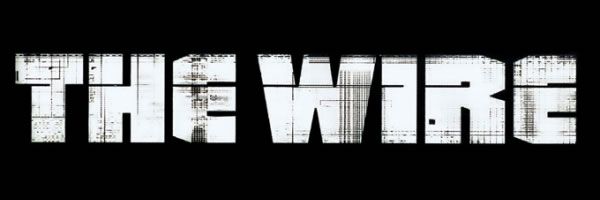Just a couple of days ago we got the news that HBO's The Wire (in its remastered form) would be available on HBO Go starting December 26th, followed by the HD edition of the series going up for digital purchase on January 5, 2015. And after that we'll be getting a Blu-ray release of the series in the summer.
This news was offset by the fact that the remaster will take a show that, while shot on film, was originally framed in the 4:3 aspect ratio and would stretch it out to 1:85 in order to better fit today's HD televisions. It's ironic that, while these TV's have made the correct aspect ratios for film (1:85, 2:35, 2:40 etc...) more palatable for consumers, they've had the opposite effect for every TV show produced before 2008 or so. Creator/showrunner David Simon addressed the issue at that time in an even-handed and fair manner (he thinks it both helps and hurts his particular series), but now he's provided video comparisons that help illustrate his point. Hit the jump for the contrasting clips from The Wire, this is fascinating stuff.
Simon wrote all of this out on his blog, and I'll position it in a similar way here. I won't clutter this with my own thoughts, except to say that I think this is, in and of itself, a great lesson in framing:
To their great credit, once we alerted HBO production executives to our absolute interest in the matter, they halted the fall HD release and allowed us to engage in detail. And over the past several months, looking at some of what the widescreen format offered, three things became entirely clear: First, there were many scenes in which the shot composition is not impaired by the transfer to 16:9, and there are a notable number of scenes that acquire real benefit from playing wide. An example of a scene that benefits would be this one, from the final episode of season two, when an apostolic semicircle of longshoremen forms around the body of Frank Sobotka:
Fine as far as it goes, but the dockworkers are all that much more vulnerable, and that much more isolated by the death of their leader when we have the ability to go wider in that rare crane shot:
But there are other scenes, composed for 4:3, that lose some of their purpose and power, to be sure. An early example that caught my eye is a scene from the pilot episode, carefully composed by Bob, in which Wee Bey delivers to D’Angelo a homily on established Barksdale crew tactics. “Don’t talk in the car,” D’Angelo reluctantly offers to Wee Bey, who stands below a neon sign that declares, “burgers” while D’Angelo, less certain in his standing and performance within the gang, stands beneath a neon label of “chicken.”
That shot composition was purposed, and clever, and it works better in the 4:3 version than when the screen is suddenly widened to pick up additional neon to the left of Bey:
In such a case, the new aspect ratio’s ability to acquire more of the world actually detracts from the intention of the scene and the composition of the shot. For that reason, we elected in the new version to go tighter on the key two-shot of Bey and D’Angelo in order to maintain some of the previous composition, albeit while coming closer to our backlit characters than the scene requires:
Be sure to head over to Simon's blog for additional insight. Like he says, some of these changes can be a bummer. But millions more people are about to discover The Wire, so it's not all bad.

